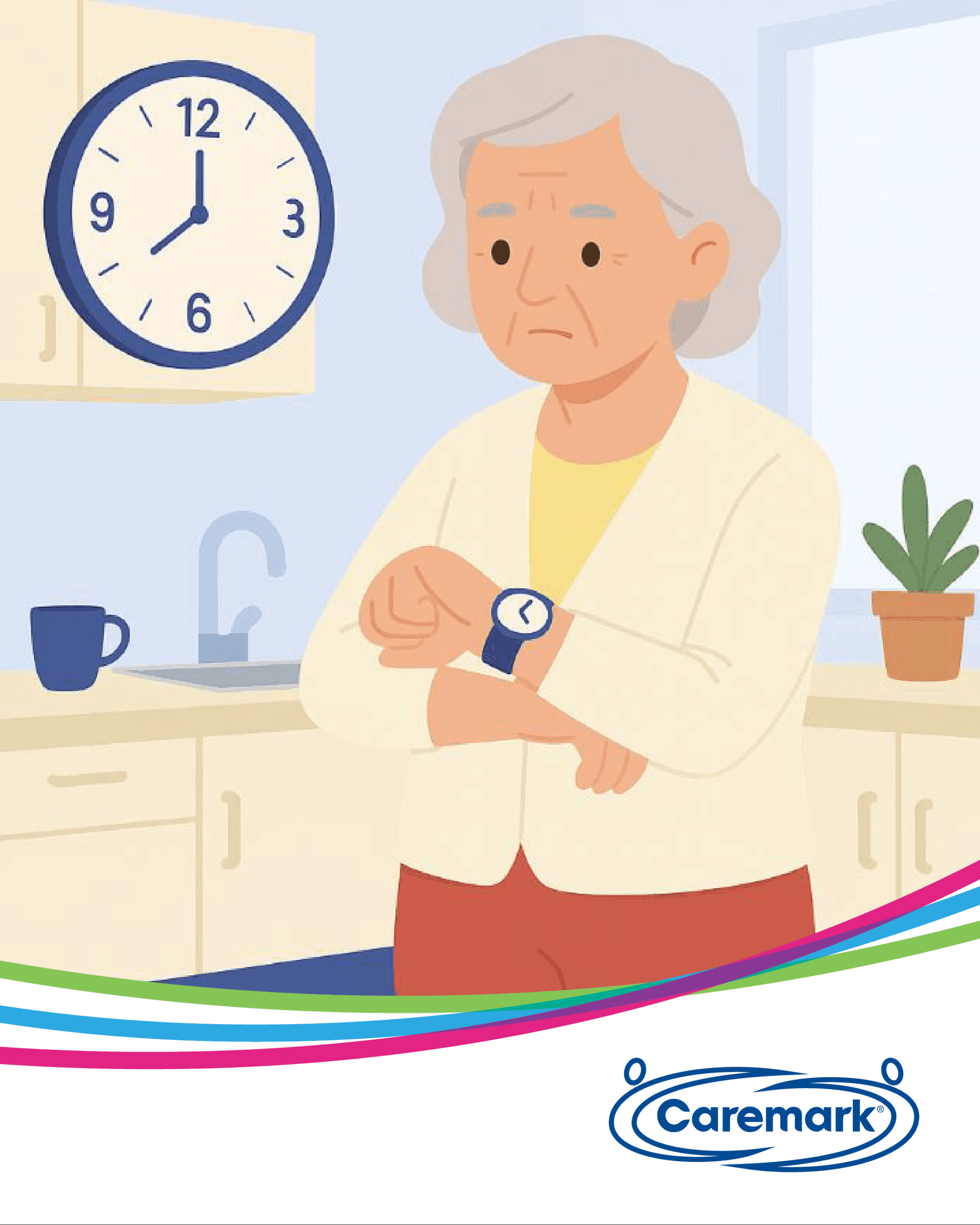Clocks Changing and Dementia: Tips from Caremark

There’s no place like home, and small changes can make a big difference to how home feels. Twice a year, the UK has the clocks changing by an hour. For many, it’s a quick tweak to the routine. For others—especially older adults or people living with dementia—the shift can unsettle sleep, appetite and confidence. This friendly guide explains when the clocks change, why we do it, and how to keep life steady. We’ll also answer a common question: what is daylight savings time, and how does daylight saving time affect everyday life? If you’d like a hand, Caremark’s local teams are here to help with calm mornings, timely medication prompts and a reassuring smile.
When do the clocks change?
The UK moves between Greenwich Mean Time (GMT) and British Summer Time (BST) each year. An easy reminder is: spring clock forward, autumn clock back. Clocks changing is nationwide—England, Scotland, Wales and Northern Ireland all switch at the same time, so public transport and services update together. Northern areas may feel the darker autumn mornings and brighter spring evenings more keenly, but the routine is the same everywhere.
To prepare, set your clocks the night before. Most smartphones adjust automatically, but check watches, ovens and car displays. Review any medication times, and allow a little extra rest—especially for children, older adults and those living with dementia. Bright morning light after the spring clock forward can lift alertness, while blackout curtains and a steady bedtime help when evenings feel lighter or mornings darker. If routine changes feel daunting, Caremark can help with personalised visit times, gentle prompts for meals and medication, and everyday reassurance to keep days running smoothly.
What is daylight savings time?
People often ask, “what is daylight savings time, and why do we use it?” Put simply, daylight saving time is the practice of moving the clock forward in spring and back in autumn to make better use of natural light. In the UK, we advance the clock forward to create longer, lighter evenings through summer, and return to standard time in autumn. The idea dates back to the early 20th century, and while energy savings today are debated, many people enjoy lighter evenings for walking, social time and community activities.
So, what is daylight savings time doing for day-to-day life? For most of us, it’s a small nudge to our routine. For anyone sensitive to change, planning ahead helps. Keep mealtimes steady, adjust sleep in small steps, and use light to guide the body clock. Our Care Assistants weave these simple supports into everyday care—so customers feel settled, safe and confident at home during clocks changing periods and after the clock go forward each spring.
Clocks changing and dementia: reducing confusion
When the clock go forward or back, changes in light and timing can be confusing for people living with dementia. Evenings can feel longer, restlessness can rise, and “sundowning” symptoms—such as agitation or wandering—may increase. Missed meals or taking medication at the wrong time can add to stress.
Simple steps make a big difference. Keep a clear, large-display clock and calendar in view. Use talking clocks if helpful. Keep daily routines familiar and consistent—regular wake-up, mealtimes and bedtime. Use bright morning light or a short outdoor walk to anchor the new time, and dim lights in the evening to cue wind-down. If mood or sleep changes become tricky, Caremark offers calm companionship, timely prompts and gentle reassurance. Our Care Assistants bring professionalism, kindness and cheery visits that help each day feel predictable and safe—even when the clocks changing throws things off.
Practical tips to adjust with confidence
A few days before the change, shift bedtime and wake-up by 10–15 minutes each day. Keep mealtimes regular, go outside for natural light, and ease off caffeine and screens in the evening. The night before, set your clocks early, lay out clothes and organise essentials for a smooth start. Keep bedrooms cool, dark and quiet; use blackout curtains in autumn and let the light in early come spring after the clock forward.
For medication, speak to your pharmacist or GP about safe timing adjustments—especially for time-sensitive prescriptions. Write a clear plan and set alarms that match the new schedule. If you receive care at home, let your Caremark team know your preferred routine so visit times align beautifully. We’ll fit around you—not the other way round.
Here for you, every hour of the day
You or someone you love may only need a little extra help—or more specialised care. Whatever you need, whenever you need it, we’re here. From companionship and domestic help to dementia care and live-in care, we tailor support to fit your life. With Caremark, you’ll have:
- Personalised care plans designed around your routine
- Allocated Care Assistants matched for continuity and trust
- Excellent standards, delivered with dignity and respect
- Open, honest communication with family members (when requested)
- A local, responsive team that knows your community
If clocks changing has you wondering how to keep life steady, we’d love to help.
About Caremark Worcester & Malvern Hills
Caremark Worcester & Malvern Hills provides tailored care services in the area to anyone who might need them.